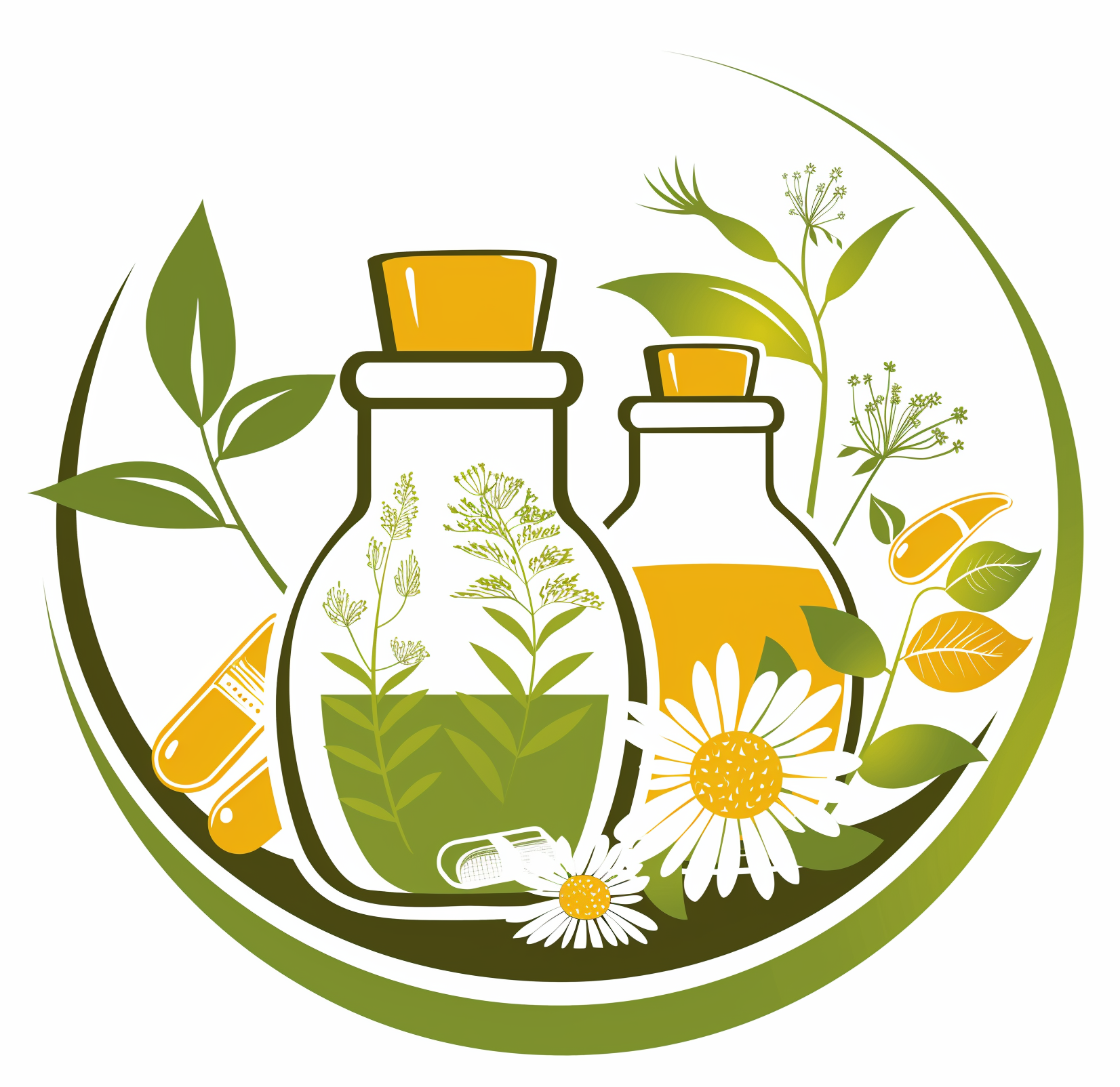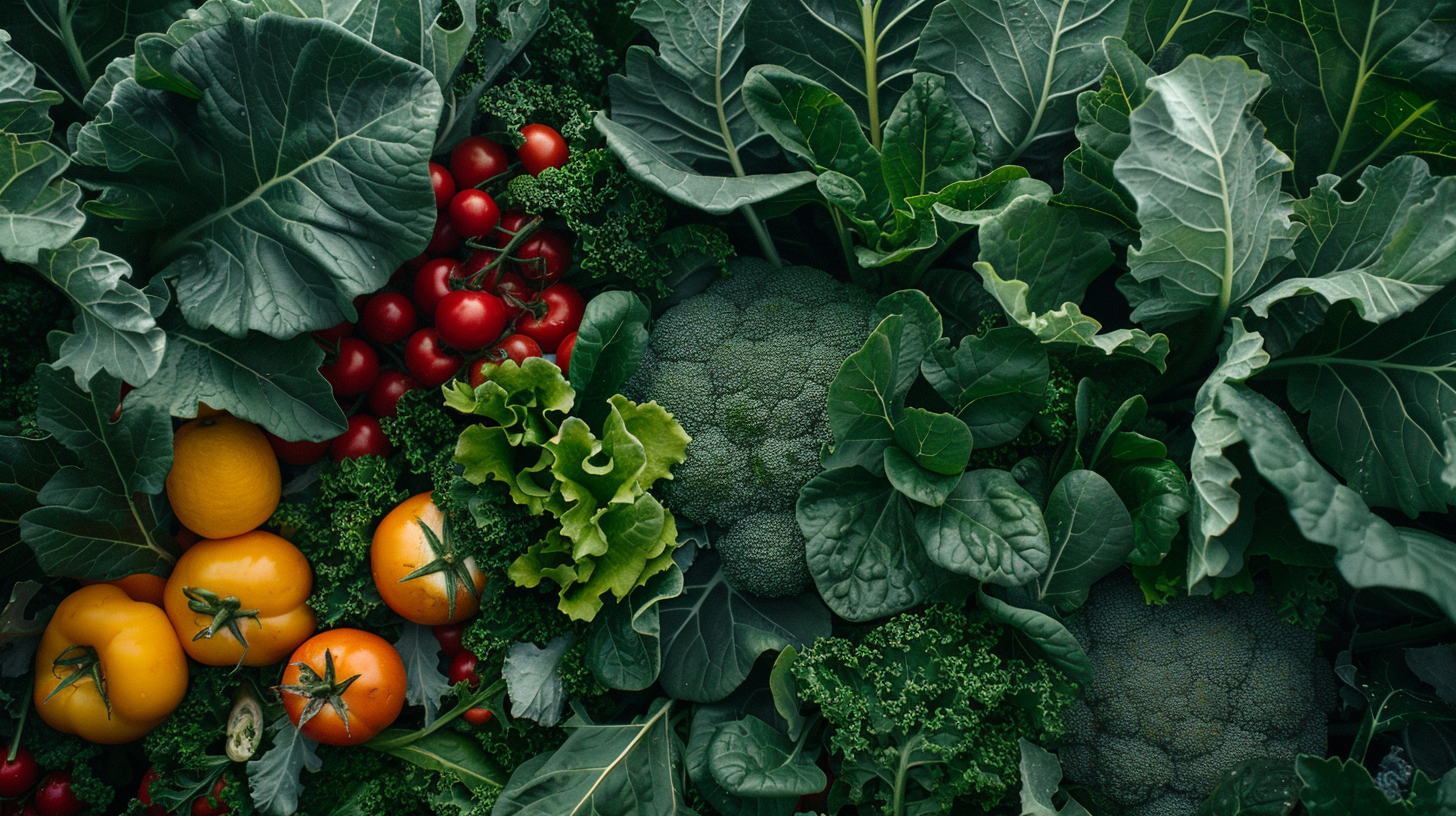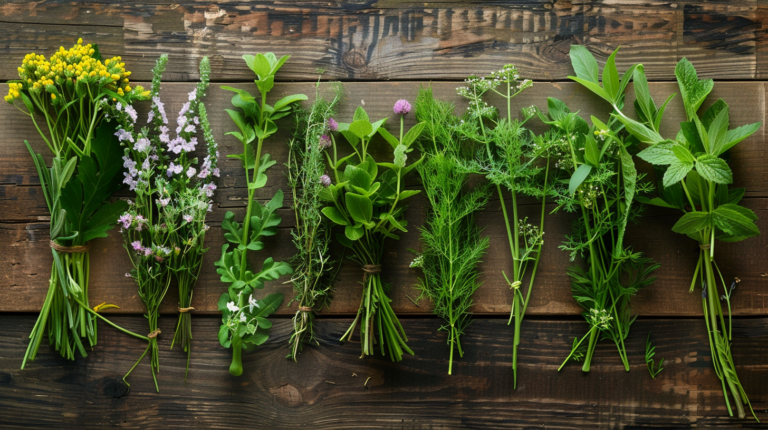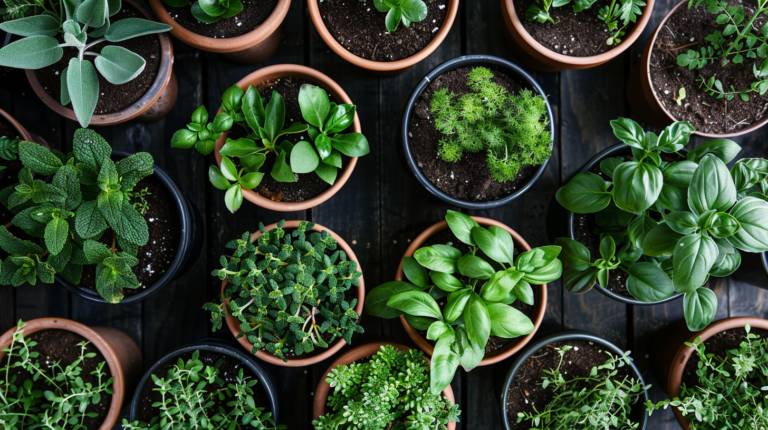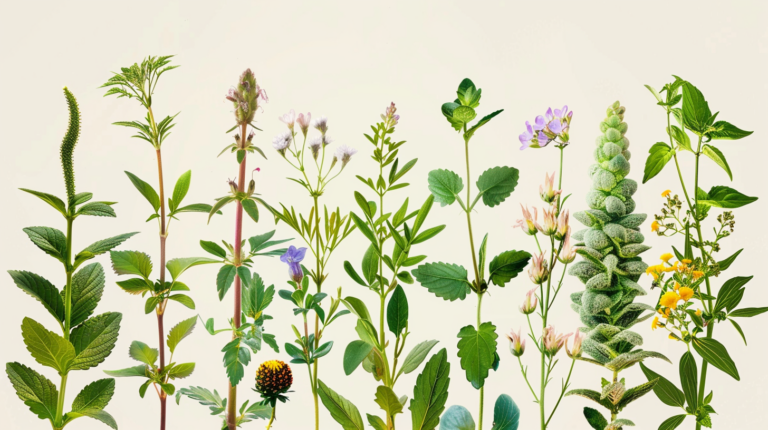Discover Top Nutritional Plants: Boost Your Health Naturally
Ever feel like your energy levels are free-falling faster than you can catch them? Well, you’re not alone. Many struggle with sustaining optimal health amidst hectic schedules, nutrient-poor diets, and environmental stressors. It’s a classic tale of nutrient deficiency wreaking havoc on our bodies. Imagine a day where this all-too-common problem is addressed at its roots.
Here’s where nutritional plants come into play. Picture the lush, vibrant greens and colorful root vegetables packed with essential nutrients, from potassium to calcium, meeting your body’s every need. These aren’t just any plants; they are nature’s very own multivitamins, stabilizing your nutrition and empowering you to tackle your day.
Packed with minerals and vitamins, nutritional plants cultivate not just your garden soil, but also your health, offering a bounty of benefits that could rival any supplement. From boosting your immune system to enhancing your plant growth and metabolism, they truly are the cornerstone of a balanced diet. Keep reading to delve deeper into how these superfoods can transform your life!
Understanding Nutritional Plants
What Are Nutritional Plants?
Nutritional plants are nature’s powerhouses, bursting with essential nutrients our bodies crave. These plants play a crucial role in providing vitamins, minerals, antioxidants, and other health-boosting compounds. Think of them as the cornerstone of a healthy diet, aiding in overall bodily nutrition and bolstering your immune system. Imagine the joy of munching on a fresh leaf, knowing it’s packed with natural goodness!
Types and Examples of Nutritional Plants
Nutritional plants come in a variety of types, each packed with unique benefits. Here are some commonly known categories:
- Leafy Greens: Spinach, kale, and lettuce.
- Root Vegetables: Carrots, beets, and sweet potatoes.
- Fruits: Blueberries, avocados, and apples.
- Herbs and Spices: Ginger, turmeric, and basil.
Whether you’re eyeing those nutrient-dense leaves or the intriguing combinations of herbs, there’s a vast array of nutritional plants that can transform your meals into a culinary delight while enhancing your health.
Benefits of Nutritional Plants
Nutritional plants go beyond just filling your plate; they offer a myriad of benefits:
- Improved Digestion: Many contain fibers that aid in digestion.
- Enhanced Immunity: Packed with vitamins like A, C, and E.
- Rich in Essential Minerals: Such as calcium, potassium, and magnesium.
- Antioxidant Properties: Help to fend off free radicals and prevent chronic diseases.
In essence, incorporating these plants into your diet can help improve your overall well-being. As the wise herbalist Rosemary Gladstar once said, “The best medicine always comes from the garden.”
Top Nutritional Plants to Include in Your Diet
Leafy Greens
Spinach
Spinach is the poster child for nutrient-rich greens. Bursting with vitamins A, C, and K, it also contains iron and calcium. Regularly consuming spinach can aid in maintaining healthy blood pressure, boosting eye health, and enhancing bone strength.
Kale
This leafy green is nothing short of a nutritional superstar. Kale is loaded with antioxidants, fiber, and several vitamins and minerals. It’s a fantastic source of Vitamin K, which is crucial for bone health and blood clotting.
Root Vegetables
Sweet Potatoes
Sweet potatoes are not just delicious; they are also packed with beta-carotene, fiber, and vitamins A and C. These vibrant roots can help improve vision, boost immune function, and support gut health.
Carrots
Carrots are renowned for their rich beta-carotene content, which converts to Vitamin A, great for eye health. They’re also a wonderful source of antioxidants and fiber.
Fruits
Blueberries
Blueberries are tiny but mighty, loaded with antioxidants, particularly anthocyanins, which give them their brilliant color. They are excellent for brain health, reducing inflammation, and lowering the risk of chronic diseases.
Avocado
Avocados are nutritional bombs rich in healthy fats, particularly monounsaturated fats, which are heart-healthy. They also provide fiber, Vitamin E, and potassium.
Herbs and Spices
Turmeric
Turmeric is famed for its anti-inflammatory properties, mainly due to the compound curcumin. Adding turmeric to your dishes can help reduce inflammation and improve joint health.
Ginger
Ginger is another powerful spice known for its anti-inflammatory and antioxidant properties. It’s beneficial for digestion, reducing nausea, and fighting common colds.
How to Grow Your Own Nutritional Plants
Finding the Right Soil and Location
Growing your own nutritional plants starts with understanding the needs of each plant. Most nutritional plants thrive in well-drained, fertile soil with plenty of organic matter. Ensure that you also find a good location with adequate sunlight, as light is essential for plant growth.
Essential Tools and Supplies
Equipping yourself with the right tools can make gardening a joy. Here’s a list to get you started:
- Quality compost or organic fertilizer to enrich your soil.
- Gardening gloves and a sturdy shovel for planting.
- Watering can or garden hose for ensuring your plants get adequate water.
- Pots or raised beds for growing in limited space.
Planting and Maintenance Tips
Planting and maintaining your nutritional plant garden requires attention to detail:
- Plant at the Right Time: Research the best planting seasons for each type of plant.
- Water Regularly: Ensure your plants are adequately watered, but avoid waterlogging.
- Weed Often: Keep your garden free from weeds that can compete for nutrients.
- Use Mulch: Mulch helps retain soil moisture and can add nutrients as it breaks down.
Harvesting Your Nutritional Plants
Timing your harvest can impact the nutrient content of your plants. Leafy greens should ideally be harvested in the morning when they are freshest. Root vegetables are generally ready in late summer or early fall. Each plant type has its own peak harvest time, so be diligent about researching and noting these timings.
Once you’ve harvested, store your plants properly to retain their nutritional values. Leafy greens can often be stored in the refrigerator in a damp cloth, while root vegetables like carrots are best kept in a cool, dark place.
Simple Recipes Featuring Nutritional Plants
One of the joys of growing your own nutritional plants is being able to transform them into delightful dishes. Here are some simple and tasty recipes to get you started:
- Spinach and Avocado Smoothie: Blend together one cup of fresh spinach, one ripe avocado, a banana, and a cup of almond milk. Add a tablespoon of honey for sweetness and enjoy this creamy, nutrient-packed drink as a refreshing breakfast or snack.
- Sweet Potato and Kale Hash: Dice sweet potatoes and sauté them in olive oil until tender. Add chopped kale, a pinch of sea salt, and black pepper. Cook until the kale is wilted. Top with a fried egg for a delicious and invigorating meal.
- Berry and Ginger Yogurt Parfait: Layer Greek yogurt with a mix of fresh blueberries and a dash of ground ginger. Top with granola and a drizzle of honey for a healthy dessert or breakfast option.
- Turmeric Carrot Soup: Sauté chopped onions and garlic in olive oil. Add sliced carrots, vegetable broth, and a teaspoon of ground turmeric. Simmer until the carrots are soft, then blend until smooth. This soup is perfect for boosting immunity and soothing inflammation.
Cooking Tips to Maximize Nutrient Retention
Cooking is not just about flavor; it’s also about preserving the nutrients in your plants. Here are a few tips to keep their nutritional values intact:
- **Avoid Overcooking**: Overcooking can deplete the vitamins and minerals in your plants. Aim to cook your vegetables until they’re just tender.
- **Use Minimal Water**: When boiling or steaming, use as little water as possible, as water can leach away minerals like **calcium** and **potassium**.
- **Eat Raw When Possible**: Many plants, like **leafy greens**, are incredibly nutritious when eaten raw. Incorporate them into salads and smoothies for maximum benefit.
- **Pair with Healthy Fats**: Fat-soluble vitamins (A, D, E, K) are better absorbed when consumed with healthy fats. Add a bit of olive oil or avocado to your dishes.
Creating Balanced Meals with Nutritional Plants
Balancing your meals ensures you get a variety of **nutrients** essential for health. Here’s how to create balanced meals incorporating **nutritional plants**:
- Combine Different Plant Types: Mix **leafy greens**, **root vegetables**, **fruits**, and **herbs** in your meals. For example, a salad with spinach, roasted sweet potatoes, sliced avocados, and a sprinkling of sunflower seeds offers a range of **nutrients**.
- Incorporate Protein Sources: Add legumes, nuts, seeds, or lean meats to your dishes to ensure you’re getting adequate protein. A quinoa and kale bowl topped with chickpeas and a lemon-tahini dressing is both delicious and well-rounded.
- Use Whole Grains: Pair your nutrients with whole grains like brown rice, quinoa, or whole wheat pasta. An example would be a stir-fry with mixed vegetables and tofu over brown rice.
Dealing with Pests and Diseases
Even the most diligent gardeners can encounter pests and diseases. Here are some tips on how to manage them organically:
- Identify the Pest or Disease: Knowing what you’re dealing with is half the battle. Use resources like the **google scholar** or gardening community forums to identify the issue.
- Implement Companion Planting: Some plants naturally repel pests. For instance, marigolds can keep aphids away from your leafy greens.
- Use Natural Pesticides: A mixture of water, neem oil, and a few drops of dish soap can be effective against many common garden pests.
- Practice Crop Rotation: Rotating your plants each season can help prevent soil-borne diseases and pest build-up.
Overcoming Soil and Weather Issues
Proper soil and weather management ensures your plants get the best start. Here are a few strategies:
- Test Your Soil: Testing your soil can reveal nutrient deficiencies that you can correct with organic amendments. Look for key nutrients like nitrogen, phosphorus, and calcium.
- Amend the Soil: Add organic matter like compost to improve soil texture and nutrient content. This also enhances **water** retention, a critical element for plant growth.
- Choose the Right Plant Varieties: Select plant varieties suited to your local climate. Consult local nurseries or gardening groups for recommendations.
- Use Mulch: Mulching helps retain soil moisture, suppress weeds, and moderate soil temperature.
Ensuring Optimal Growth Throughout Seasons
Keeping your garden thriving year-round requires some planning and attention:
- Plan for Successive Planting: Stagger your planting schedule to ensure continuous harvests. For example, plant a new row of lettuce every two weeks.
- Provide Seasonal Protection: Use row covers or cold frames to protect plants from extreme weather conditions. This is especially useful for extending your growing season into fall and winter.
- Monitor **Water** Needs: Different seasons have different water requirements. Be mindful of this to avoid over- or under-watering, especially during hot summer months or rainy seasons.
Conclusion and Additional Resources
Further Reading and References
For those eager to dive deeper into the world of nutritional plants, here are some recommended readings:
- “The Organic Gardener’s Handbook of Natural Pest and Disease Control” – A comprehensive guide on organic gardening practices.
- “Plant Nutrition Manual” by J. Benton Jones Jr. – This book provides detailed information on the nutritional requirements of plants.
- “Nutritional Herbology” by Mark Pedersen – Explore the nutritional benefits of various herbs and how to incorporate them into your diet.
- Online Databases: Websites like **google scholar** offer free access to a plethora of scientific articles and research papers on plant nutrition.
Community and Expert Support
Engaging with a community of fellow gardeners can provide valuable support and knowledge. Here are a few ways to connect:
- Join local gardening clubs or online forums where you can ask questions and share experiences.
- Attend workshops or webinars by experts in plant nutrition and organic gardening.
- Follow gardening blogs and YouTube channels for tips and inspiration.
Cultivating and integrating **nutritional plants** into your life not only brings you closer to nature but also enriches your diet with fresh, wholesome foods. As you embark on this journey, remember to enjoy every step, from planting those first seeds to savoring your homegrown harvests.
